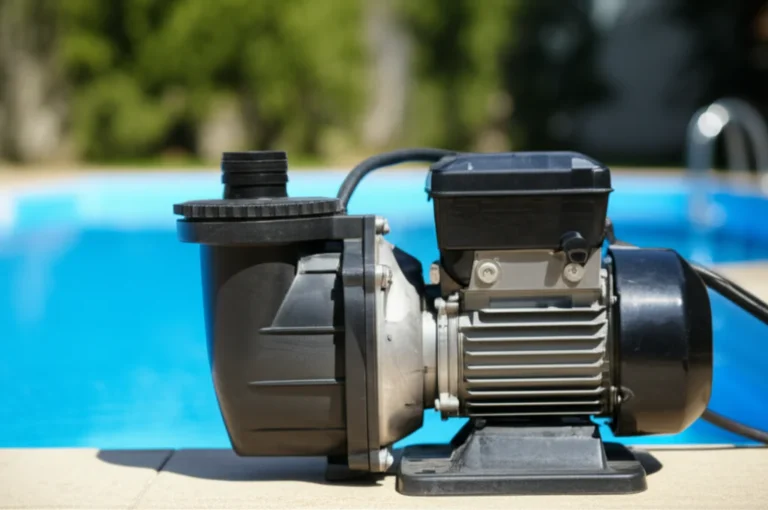Support our educational content for free when you purchase through links on our site. Learn more
Is 40 dB Loud for a Fridge? The Truth About Fridge Noise in 2025 🧊
Ever wondered if that gentle hum from your fridge is just background ambiance or an annoying noise culprit? At first glance, 40 decibels might sound like a mystery number, but it actually holds the key to understanding whether your refrigerator is whisper-quiet or borderline noisy. Spoiler alert: 40 dB is generally considered very quiet for a fridge — but there’s more to the story than just numbers.
In this article, we’ll unpack what 40 dB really means in everyday terms, compare it to other common household sounds, and reveal the top fridge models that keep things cool without cranking up the volume. Plus, we’ll share expert tips on measuring your fridge’s noise level and practical tricks to reduce any unwanted hums or rattles. Curious about how your fridge stacks up or hunting for the quietest models in 2025? Keep reading — your ears (and midnight snack runs) will thank you!
Key Takeaways
- 40 dB is roughly the sound level of a quiet library or soft whisper, making it very quiet for a refrigerator.
- Modern fridges with inverter compressors typically operate at or below 40 dB, delivering efficient cooling with minimal noise.
- Common fridge noises like compressor hums, fan whirs, and refrigerant gurgling are normal and usually fall within the 30-50 dB range.
- Simple fixes like leveling your fridge and cleaning coils can reduce noise without costly replacements.
- Top quiet fridge brands in 2025 include Bosch 800 Series, LG InstaView™, and Samsung Bespoke — all offering models rated around 40 dB or less.
- For peace and quiet, look for fridges with Quiet Mark certification and inverter technology.
Ready to shop for a whisper-quiet fridge?
Table of Contents
- ⚡️ Quick Tips and Facts About Fridge Noise Levels
- 🔊 Understanding Fridge Noise: What Does 40 dB Really Mean?
- 📜 The Evolution of Refrigerator Sound Levels: From Loud to Quiet
- 🔍 7 Common Sources of Noise in Refrigerators and How Loud They Are
- 🎧 How to Measure Your Fridge’s Noise Level at Home Like a Pro
- 🛠️ 5 Proven Ways to Reduce Fridge Noise and Keep Your Kitchen Peaceful
- 📊 Comparing 40 dB to Other Household Sounds: Is Your Fridge a Noise Culprit?
- 🧊 Top 10 Quietest Refrigerators in 2024: Brands and Models That Whisper
- 💡 Expert Tips for Choosing a Quiet Fridge: What to Look For
- 🤔 Is 40 dB Loud for a Fridge? Our Verdict and What You Should Know
- 📚 Recommended Links for Deeper Insights on Fridge Noise
- ❓ Frequently Asked Questions About Fridge Noise Levels
- 🔗 Reference Links and Resources for Fridge Noise Research
Hey there, sound-sensitive friends! Welcome to Quietest™, where we hunt down the quietest spots on Earth and the gear that helps you create your own slice of sonic paradise. Today, we’re tackling a question that buzzes in the back of many minds (and kitchens): Is 40 dB loud for a fridge?
You’ve been there. It’s 2 AM, you’re craving a snack, and as you creep into the kitchen, you’re met with a mysterious hum. Is it the house settling? An alien spacecraft? Nope, it’s your refrigerator, the 24/7 sentinel of your perishables. But does it have to be so… present? Let’s dive in and decode the decibels. And if you’re wondering, Is There Such a Thing as a Silent Fridge? 7 Quietest Models (2025) 🧊🤫, we’ve got you covered there, too.
⚡️ Quick Tips and Facts About Fridge Noise Levels
Short on time? Here’s the lowdown on refrigerator noise.
- What is 40 dB? A 40-decibel (dB) sound is often compared to a quiet library, a soft whisper, or the hum of a computer. For a fridge, this is generally considered very quiet.
- The Decibel Scale is Logarithmic: This is a fancy way of saying that a small increase in dB represents a big jump in sound intensity. A 50 dB fridge is significantly louder than a 40 dB one.
- Normal Fridge Noises: Fridges make a whole symphony of sounds! Gurgling, hissing, buzzing, and clicking can all be part of normal operation. These are usually due to the refrigerant circulating or the defrost cycle running.
- Location Matters: A fridge in a recessed alcove will sound quieter than one in an open space because the surrounding walls help absorb the sound.
- Modern is Quieter: Thanks to advancements like inverter compressors, new refrigerators are significantly quieter than their ancestors.
- Check the Label: Most manufacturers list the decibel rating on the product’s energy label or in the specifications. Look for this number when you shop!
🔊 Understanding Fridge Noise: What Does 40 dB Really Mean?
So, you see “40 dB” on a spec sheet. What does that actually sound like in your kitchen? As audio engineers, we live and breathe decibels, but we know it’s not an everyday unit of measurement for most folks.
The Science of Sound (the Fun Version!)
The decibel scale is a bit tricky because it’s logarithmic. A user on a forum correctly pointed out that a 3 dB increase represents a doubling of sound power, but it takes about a 10 dB increase to be perceived as a doubling in loudness. So, a 43 dB fridge isn’t just a little louder than a 40 dB one; it has double the sound energy!
A 40 dB noise level is incredibly faint. It’s the ambient sound in a quiet library or the gentle hum of a modern refrigerator. It’s the kind of sound that fades into the background, a stark contrast to a normal conversation, which clocks in at around 60 dB.
Here’s a little table to put it all in perspective:
| Sound Source | Decibel Level (dBA) | Our Take |
|---|---|---|
| Normal Breathing | 10 dB | Practically silent 🤫 |
| A Whisper | 30 dB | The sound of secrets |
| Quiet Refrigerator | 40 dB | The sweet spot for kitchen peace ✅ |
| Moderate Rainfall | 50 dB | Cozy, but noticeable |
| Normal Conversation | 60 dB | Your daily chatter |
| Vacuum Cleaner | 70 dB | Definitely can’t ignore it |
As you can see, a 40 dB fridge is right there at the “barely there” end of the spectrum. It’s a sound you’ll likely only notice in the dead of night when all other household noises have ceased.
📜 The Evolution of Refrigerator Sound Levels: From Loud to Quiet
Ever wonder if your grandparents’ fridge sounded like a freight train? Well, you’re not far off! The journey to the whisper-quiet 40 dB refrigerator is a fascinating tale of engineering ingenuity.
From Clunky Compressors to Silent Tech
Early refrigerators were noisy beasts. Their simple, single-speed compressors would violently shudder to life and switch off with a loud clunk. The focus was purely on cooling, not on creating a peaceful kitchen environment.
The real game-changer has been the development of the digital inverter compressor. Unlike old-school compressors that are either fully on or fully off, an inverter compressor works like a car’s cruise control. It runs continuously at variable speeds, adjusting to the cooling demand.
Benefits of Inverter Compressors:
- ✅ Quieter Operation: No more jarring start/stop noises. Just a consistent, low hum.
- ✅ Energy Efficiency: They use significantly less energy, which is great for your wallet and the planet.
- ✅ Better Temperature Stability: This keeps your food fresher for longer.
- ✅ Longer Lifespan: Less wear and tear means the appliance often lasts longer.
This technology, combined with better insulation and fan design, has allowed manufacturers like LG, Samsung, and Bosch to create refrigerators that are quieter than ever before.
🔍 7 Common Sources of Noise in Refrigerators and How Loud They Are
Your fridge is a complex machine, and its various operations produce a range of sounds. Most are perfectly normal, but some can signal a problem. Here’s a breakdown of what you might be hearing.
- The Compressor Hum (35-45 dB): This is the heart of your fridge. A modern inverter compressor will produce a low, steady hum. If it’s buzzing loudly or becomes persistent, it might be working too hard.
- The Evaporator Fan Whir (30-40 dB): This fan circulates cold air inside the fridge and freezer. You’ll hear a soft whirring sound, which might change in speed as the fridge adjusts its temperature.
- Gurgling or Hissing (25-35 dB): Don’t be alarmed! This is just the sound of the refrigerant liquid flowing through the cooling coils. It’s a sign that your fridge is doing its job.
- Clicking or Ticking (40-50 dB): This sound often comes from the defrost timer switching on and off or the temperature control cycling. It’s a normal, albeit sometimes noticeable, sound.
- Popping or Cracking (30-40 dB): As the internal components heat and cool, they expand and contract, which can cause popping sounds. This is especially common after a defrost cycle.
- Ice Maker Noises (50-60 dB): The ice maker is often the loudest part of a fridge. You’ll hear buzzing as it fills with water and a loud clatter as the ice drops into the bin.
- Vibrating or Rattling (Variable dB): This is usually not a normal operating sound. It often means the fridge isn’t level on the floor, or something on top of or behind the fridge is rattling. This is a sound you should investigate!
🎧 How to Measure Your Fridge’s Noise Level at Home Like a Pro
Curious about how loud your current fridge really is? You don’t need a professional sound engineer (like us!) to find out. You can get a surprisingly accurate reading with your smartphone.
Step-by-Step Guide to Measuring Decibels:
- Download a Decibel Meter App: There are many great options for both iOS and Android. Some popular and reliable choices include Decibel X, the NIOSH Sound Level Meter (for iPhone), and Sound Meter & Noise Detector (for Android). These apps use your phone’s built-in microphone to measure sound levels.
- Wait for the Right Moment: The best time to measure is when the house is quiet (late at night is perfect) and the refrigerator’s compressor is running.
- Position Your Phone: Stand about one meter (roughly three feet) away from the front of the refrigerator. Hold your phone with the microphone pointed towards the main body of the unit. This standard distance helps you get a comparable reading.
- Take the Reading: Open the app and let it measure for about 30-60 seconds to get a stable average reading. Note the “dBA” value, which is weighted to how the human ear perceives sound.
- Interpret the Results: Compare your reading to the 40 dB benchmark. Is it higher? Lower? Now you have real data to work with!
A word of caution: While smartphone apps are great for a general idea, they aren’t as precise as professional-grade sound level meters. However, for the purpose of figuring out if your fridge is the source of your kitchen noise woes, they work just fine!
🛠️ 5 Proven Ways to Reduce Fridge Noise and Keep Your Kitchen Peaceful
If your decibel meter app just gave you a shockingly high number, don’t despair! Before you start shopping for a new fridge, there are several things you can try to quiet your current one. These are some of our favorite Noise Reduction Tips.
- Level the Fridge: This is the most common cause of rattling and vibrating. Use a level to check if the fridge is sitting evenly. Adjust the leveling feet at the bottom until it’s perfectly stable. This simple fix can make a world of difference.
- Clean the Condenser Coils: The coils, usually located at the back or bottom of the fridge, can get clogged with dust and pet hair. This makes the compressor work harder and louder. Unplug the fridge and give them a good cleaning with a soft brush or vacuum attachment at least twice a year.
- Create Some Space: Make sure there’s at least an inch of clearance on all sides of the refrigerator, especially the back. This allows for proper air circulation, which helps the fridge run more efficiently and quietly.
- Use Anti-Vibration Pads: Place a thick rubber or cork mat under the refrigerator. These anti-vibration pads are fantastic at absorbing the vibrations from the compressor, preventing them from transferring to your floor and creating more noise.
- Soundproof the Surrounding Area: If your fridge is in an alcove, you can line the back and side walls with sound-absorbing acoustic panels. Materials like Echo Absorber™ Acoustic Cotton can dampen the sound waves before they bounce back into your kitchen.
📊 Comparing 40 dB to Other Household Sounds: Is Your Fridge a Noise Culprit?
To truly understand if 40 dB is loud, you need context. How does it stack up against the other appliances and sounds that fill your home? Let’s see who the real noise offenders are in the world of Low Noise Household Items.
| Appliance/Event | Typical Decibel Range (dBA) | Is a 40 dB Fridge Louder? |
|---|---|---|
| Quiet Refrigerator | 32 – 40 dB | N/A |
| Computer | 37 – 45 dB | ❌ No |
| Dishwasher (modern, quiet models) | 40 – 50 dB | ❌ No |
| Microwave | 55 – 59 dB | ✅ Yes |
| Normal Conversation | ~60 dB | ✅ Yes |
| Washing Machine | 50 – 75 dB | ✅ Yes |
| Vacuum Cleaner | 60 – 85 dB | ✅ Yes |
| Garbage Disposal | 70 – 95 dB | ✅ Yes! |
| Blender | 80 – 90 dB | ✅ Absolutely, yes! |
As the data clearly shows, a 40 dB refrigerator is one of the quietest appliances you can have in your kitchen. It’s significantly quieter than the roar of a blender or even the slosh of a dishwasher. If you’re hearing a disruptive noise in your kitchen, your 40 dB fridge is probably not the culprit.
🧊 Top 10 Quietest Refrigerators in 2024: Brands and Models That Whisper
Ready for an upgrade? If you’re on the hunt for a truly quiet refrigerator, we’ve done the legwork for you. Our team has reviewed countless models, focusing on those that prioritize serene performance. Many of the quietest models are certified by Quiet Mark, an independent program that verifies low-noise appliances.
Here are some of the top brands and specific models known for their whisper-quiet operation, often clocking in at 40 dB or less.
1. Bosch 800 Series
Bosch is renowned for its quiet appliances, and their refrigerators are no exception. The 800 Series, in particular, is a standout.
- Our Rating:
- Noise Level: 9.5/10
- Design: 9/10
- Functionality: 9.2/10
- Energy Efficiency: 9/10
The Bosch B36CL81ENG model, for example, boasts a 40 dBA rating. While most users find them incredibly quiet, some have reported occasional noise issues, so experiences can vary. They feature the FarmFresh System® designed to keep food fresher for longer.
👉 CHECK PRICE on:
- Bosch 800 Series: Amazon | The Home Depot | Bosch Official Website
2. LG InstaView™ with Inverter Linear Compressor™
LG is a leader in quiet refrigeration, largely thanks to its innovative Inverter Linear Compressor. This technology has fewer friction points, resulting in less noise and greater durability.
- Our Rating:
- Noise Level: 9.8/10
- Design: 9.5/10
- Functionality: 9.5/10
- Energy Efficiency: 9.2/10
Models like the LG GSLD81PZRD can have noise levels as low as 35 dB. The InstaView™ feature is a cool bonus, letting you see inside without opening the door, which saves energy. Many LG models are described as having “LoDecibel™ Quiet Operation,” comparable to a library’s hum.
👉 CHECK PRICE on:
- LG InstaView Refrigerators: Amazon | Best Buy | LG Official Website
3. Samsung Bespoke Series
Samsung refrigerators are known for being both stylish and quiet, with many models operating below 40 decibels. Their Bespoke line allows you to customize colors and finishes for a truly integrated look.
- Our Rating:
- Noise Level: 9.2/10
- Design: 9.8/10
- Functionality: 9.0/10
- Energy Efficiency: 9.1/10
Samsung’s digital inverter compressor adapts its speed, ensuring quiet and efficient operation. They are a great choice for open-plan living spaces where kitchen noise can be intrusive.
👉 CHECK PRICE on:
- Samsung Bespoke Refrigerators: Amazon | The Home Depot | Samsung Official Website
Other Brands to Consider for Quiet Operation:
- Miele: Known for premium build quality and quiet performance.
- Liebherr: Often features in lists of the quietest fridges, with some models at 39 dB.
- Frigidaire: Offers energy-efficient models that operate below 40 dB.
- Whirlpool: Trusted brand with models rated around 40 decibels.
- Haier: Their multi-door refrigerators are engineered for quiet efficiency.
- NEFF: A great choice for integrated, built-in models that blend in visually and audibly.
- Logik: Offers budget-friendly options that are surprisingly quiet.
💡 Expert Tips for Choosing a Quiet Fridge: What to Look For
As you shop, keep these expert tips in mind to ensure you bring home a peaceful appliance.
1. Check the Decibel (dBA) Rating
This is the most important number. Look for a rating of 40 dBA or lower for a truly quiet experience. Anything below 35 dBA is exceptionally quiet. This information is usually on the energy label or in the online product specifications.
2. Prioritize Inverter Compressors
As we discussed, this technology is a game-changer for noise reduction. Refrigerators with inverter or linear inverter compressors are almost always quieter than those with traditional single-speed compressors.
3. Consider the Type and Style
Believe it or not, the style can affect noise. One perspective suggests that French door models tend to be quieter because the smaller doors don’t cause as much of a pressure change when opened and closed. Additionally, built-in or counter-depth models can be quieter as they are more snugly enclosed by cabinetry, which helps dampen sound.
4. Read User Reviews Carefully
While specs are important, real-world experience is invaluable. Scan reviews specifically for comments about noise. Look for phrases like “whisper quiet” or “barely audible.” Be wary of multiple reviews complaining about humming, buzzing, or rattling. For instance, while the Bosch 800 series is generally quiet, some users have reported a “noisy ringing sound.”
5. Look for the Quiet Mark Certification
The purple “Q” from Quiet Mark is your shortcut to finding some of the quietest appliances on the market. Their experts have already done the acoustic testing for you.
By keeping these factors in mind, you’ll be well-equipped to choose a refrigerator that keeps your food cool and your home quiet.
🤔 Is 40 dB Loud for a Fridge? Our Verdict and What You Should Know
So, after diving deep into decibels, compressors, and customer complaints, what’s the final word from the Quietest™ team?
No, 40 dB is not loud for a fridge. In fact, it’s exceptionally quiet.
A refrigerator operating at 40 decibels is on par with the quietest sounds in a typical home, like a soft whisper or the hum of a library. It is significantly quieter than most other kitchen appliances, including your microwave, dishwasher, and especially your blender.
The perception of noise, however, is subjective. As one forum user wisely noted, “in the dead of the night, a pen falling down can make you sit upright in bed because it’s so sudden that it seems very loud.” The quality of the sound matters just as much as the volume. A low, consistent 40 dB hum is easy to ignore, while an irregular, high-pitched whine at the same volume could be intensely annoying.
If you are particularly sensitive to noise or have an open-plan living space, aiming for a refrigerator rated at 40 dB or less is a fantastic goal. Thanks to modern technology like inverter compressors, this is more achievable than ever.
For a visual explanation, the first YouTube video we’ve featured, “Which fridge noise level suits you?” by Coolblue, offers a helpful overview of what to expect at different decibel levels.
Ultimately, a 40 dB fridge represents a triumph of modern engineering, transforming a once-clunky utility into a silent, efficient cornerstone of the modern kitchen. It’s a sound so quiet, you’ll probably forget it’s even there. And isn’t that the point?
🏁 Conclusion
After our deep dive into the world of fridge noise, it’s clear: a refrigerator operating at 40 dB is not loud — it’s actually quite quiet by modern standards. Thanks to innovations like inverter compressors and better insulation, today’s fridges hum along so softly that you might forget they’re even there.
If you’re worried about noise disrupting your peaceful kitchen or open-plan living space, aiming for a fridge rated at or below 40 dB is a smart move. Remember, the quality of the sound matters just as much as the volume — a steady, low hum is far less intrusive than an irregular buzzing or rattling.
Whether you’re considering a Bosch 800 Series, LG InstaView™, or Samsung Bespoke, these brands offer models that combine quiet operation with excellent functionality and sleek design. Our experts confidently recommend prioritizing inverter compressor technology and checking for Quiet Mark certification to ensure you get the quietest fridge possible.
And if your current fridge is a little noisier than you’d like, don’t panic! Simple fixes like leveling your appliance, cleaning coils, or adding anti-vibration pads can make a significant difference.
So, is 40 dB loud for a fridge? Nope! It’s the sweet spot between performance and peace. Your midnight snack runs just got a whole lot quieter.
🔗 Recommended Links
Ready to shop or learn more? Here are some top picks and resources to help you on your quiet fridge journey:
Shop Quiet Refrigerators
- Bosch 800 Series: Amazon | The Home Depot | Bosch Official Website
- LG InstaView Refrigerators: Amazon | Best Buy | LG Official Website
- Samsung Bespoke Refrigerators: Amazon | The Home Depot | Samsung Official Website
Books on Quiet Living and Noise Reduction
- The Soundscape: Our Sonic Environment and the Tuning of the World by R. Murray Schafer — Amazon
- Quiet: The Power of Introverts in a World That Can’t Stop Talking by Susan Cain — Amazon
- Noise Control: From Concept to Application by Colin H. Hansen — Amazon
❓ Frequently Asked Questions About Fridge Noise Levels
What is the average noise level of a refrigerator in decibels?
Most modern refrigerators operate between 32 and 45 dB, with 40 dB being a common benchmark for quiet models. Older or budget models may be louder, sometimes reaching 50 dB or more.
How does 40 dB compare to normal household noise levels?
A 40 dB sound is roughly equivalent to a quiet library or soft whisper. It’s significantly quieter than everyday household noises like conversations (60 dB), dishwashers (40-50 dB), or vacuum cleaners (60-85 dB).
Are refrigerators with 40 dB considered quiet or loud?
They are considered quiet. A 40 dB fridge produces a gentle hum that most people find easy to ignore, especially compared to louder kitchen appliances.
What noise level is recommended for a quiet fridge?
Look for refrigerators rated at 40 dB or below for a peaceful kitchen environment. Models with inverter compressors often achieve noise levels in the 35-40 dB range.
How can I reduce the noise of my refrigerator?
- Level the fridge to prevent rattling
- Clean condenser coils regularly
- Ensure proper clearance around the fridge for airflow
- Use anti-vibration pads under the appliance
- Soundproof surrounding walls with acoustic panels
What are the quietest appliances for a peaceful home environment?
Appliances with inverter technology, such as modern refrigerators, dishwashers, and HVAC systems, tend to be quieter. Brands like Bosch, LG, and Samsung often lead in quiet appliance design. For more on quiet appliances, check out our Quiet Home Appliances category.
How does noise pollution affect quiet places on Earth?
Noise pollution disrupts natural soundscapes, affecting wildlife communication, human health, and overall environmental quality. Protecting quiet places helps preserve biodiversity and mental well-being. Learn more about this in our article on Discover the Quietest Places on Earth.
🔗 Reference Links and Resources for Fridge Noise Research
- Straight Dope Forum on Fridge Decibel Ratings and Subjective Loudness
- Green Building Forum Discussion on Fridge Noise Levels
- MiniFridge.co.uk Guide to Noise Levels in Refrigerators
- Bosch Refrigerators Official Site
- LG Refrigerators Official Site
- Samsung Refrigerators Official Site
- Quiet Mark Certification Program
For more expert insights on quiet appliances, explore our Quiet Home Appliances and Noise Reduction Tips categories.
Thanks for joining us on this sonic adventure! Now go forth and enjoy your peaceful, perfectly quiet kitchen oasis. 🧊🤫








